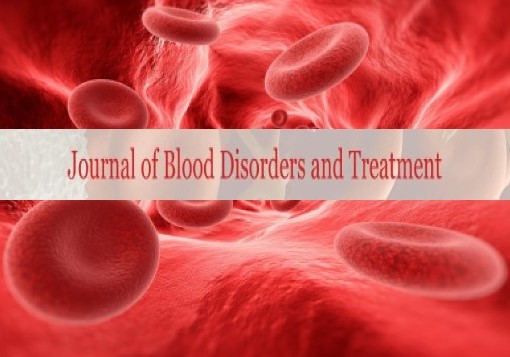A short note on common causes and risk factors of iron deficiency anemia
Received: 02-Jul-2021 Accepted Date: Jul 15, 2021; Published: 22-Jul-2021
Citation: Amaira J. A short note on common causes and risk factors of iron deficiency anemia. J Blood Disord Treat. 2021; 4(4):1.
This open-access article is distributed under the terms of the Creative Commons Attribution Non-Commercial License (CC BY-NC) (http://creativecommons.org/licenses/by-nc/4.0/), which permits reuse, distribution and reproduction of the article, provided that the original work is properly cited and the reuse is restricted to noncommercial purposes. For commercial reuse, contact reprints@pulsus.com
Abstract
Iron deficiency anaemia (IDA) occurs when the body's ability to produce enough red blood cells, which are essential for transporting oxygen from the lungs to the rest of the body, is hampered. You may feel weak, weary, and short of breath if you don't have enough iron in your blood.
Introduction
Iron deficiency anaemia (IDA) occurs when the body's ability to produce enough red blood cells, which are essential for transporting oxygen from the lungs to the rest of the body, is hampered. You may feel weak, weary, and short of breath if you don't have enough iron in your blood.
Iron is required for the production of haemoglobin, a protein that aids red blood cell oxygen transport. IDA is caused by a lack of iron in the body. Iron deficiency can occur for a variety of causes. IDA is caused by a variety of risk factors, some of which cannot be controlled and others which you may be able to change [1].
The Most Common Causes:
Iron deficiency is the most common cause of anaemia, according to the American Society of Haematology. IDA affects 5% of females and 2% of males in the United States.
A low-iron diet, the body's inability to absorb iron, severe monthly bleeding, internal bleeding, pregnancy, chronic renal disease, and chronic illnesses that produce persistent inflammation are all common causes of IDA.
Inadequate Intake of Iron
Inadequate iron intake from the diet is a common cause of IDA. Meat, seafood, beans, lentils, spinach, and iron-fortified foods are all excellent sources of iron.
There are a variety of reasons why a person's diet may be lacking in iron. It's possible that it's because they live a vegetarian or vegan lifestyle and don't eat enough iron-rich foods
Menstrual Bleeding
Heavy menstrual flow, often known as menorrhagia, may raise the risk of iron deficiency anemia. The body's iron stores might be depleted by this type of heavy blood flow.
Iron injury induced by menstrual bleeding disorders, which account for 5% to 10% of all cases. Anemia can be caused by heavy menstrual flow.
Pregnancy
IDA is very common in pregnant women. Anemia in pregnancy is predicted to affect 41.8 percent of all pregnancies worldwide. Anemia can be caused by a variety of factors. It is unknown how frequently IDAoccurs during pregnancy.
Pregnancy requires the consumption of twice as much iron. The body need iron to produce more blood in order to provide oxygen to the developing foetus. You may develop IDA if you don't have enough iron storage or don't acquire enough iron when pregnant.
Genetics
Genetics and family history may have a role in the development of IDA. Haemophilia and von Willebrand disease are two genetic disorders that can cause a person to lose iron due to frequent bleeding.
Females with the haemophilia gene and those who are symptomatic may have heavy menstrual cycles, increasing their IDA risk.
Environment
Lead poisoning from drinking water or exposure to the environment can impair the body's ability to produce red blood cells. Chronic lead poisoning and absorption can reduce the body's ability to generate haemoglobin, making IDA more likely.
Lifestyle
A person's risk of iron deficiency anaemia might be increased by certain lifestyle behaviours. This could involve the following:
A vegan or vegetarian diet: Iron deficiency can occur if a person does not consume enough iron-rich foods, particularly meat or fish.
Athletes, particularly young female athletes, are at a higher risk of developing IDA. Inadequate dietary iron intake, menstruation, increased iron loss from sweating, and an increased risk of GI bleeding andexerciseinduced inflammation is all contributory causes.
REFERENCES
- Hershko C, Vitells A, Braverman DZ. Causes of iron deficiency anemia in an adult inpatient population. Blut. 1984 Oct;49(4):347-52.
- World Health Organization. Iron deficiency anemia. assessment, prevention, and control. A guide for programme managers. 2001:47-62.
- Haas JD, Brownlie IV T. Iron deficiency and reduced work capacity: a critical review of the research to determine a causal relationship. The Journal of nutrition. 2001 Feb 1;131(2):676S-90S.





